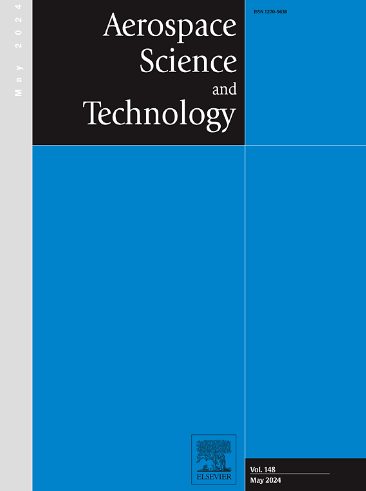带排气的高压压缩机中可变定子叶片的损耗和流动机理的实验研究
IF 5
1区 工程技术
Q1 ENGINEERING, AEROSPACE
引用次数: 0
摘要
在现代压缩机中,越来越多地使用可变定子叶片。这些叶片的前缘和后缘与机壳/轮毂之间需要一定的间隙,以防止在旋转过程中发生接触。对于采用可变定子叶片的多级轴向压缩机,了解间隙变化对压缩机性能的影响在设计过程中至关重要。本研究的重点是利用真实的发动机结构,对配备了可变定子叶片和排气装置的高压压缩机进行实验研究。研究深入探讨了可变机构流场内的损耗特性和流动机制。结果表明,在雷尼直径相同的情况下,增加径向间隙最初会降低流场损耗,但随后损耗会上升,在间隙为 2 毫米(叶片高度的 1.25%)时达到最小值。相反,在径向间隙相同的情况下,增大分币直径最初会增加损耗,然后减小,分币直径越大,损耗越小。根据这些发现,可以推断出 2 毫米左右的间隙可大大减少叶片内的损耗。叶片高度距内壁 0-10% 范围内的损耗主要来自笔形漏涡及其与通道涡的相互作用,而叶片高度 10-20% 范围内的损耗主要来自通道涡,从而降低了总体损耗。研究表明,与零间隙叶片相比,带有部分间隙的可变定子叶片可降低总压力损失,并实现更好的流场控制。本文章由计算机程序翻译,如有差异,请以英文原文为准。
Experimental study on loss and flow mechanism of variable stator vanes in high-pressure compressor with bleed
In modern compressors, variable stator vanes are increasingly utilized. These vanes require a specific gap between their leading and trailing edges and the casing/hub to prevent contact during rotation. For multi-stage axial compressors employing variable stator vanes, understanding the impact of clearance variations on compressor performance is crucial during design. This study focuses on experimental research conducted on a high-pressure compressor equipped with variable stator vanes and bleed, using a real engine structure. The investigation delves into the loss characteristics and flow mechanisms within the variable mechanism's flow field. Results show that, with the identical penny diameter, increasing radial clearance initially decreases flow field loss, but then loss rises, reaching a minimum with a 2 mm (1.25% blade height) clearance. Conversely, with the same radial clearance, increasing penny diameter initially increases loss, which then decreases, with larger penny diameters resulting in smaller losses. Based on these findings, it can be inferred that a clearance of around 2 mm substantially reduces losses within the vane. Losses within 0–10% of the blade height from the endwall mainly stem from penny leakage vortex and their interaction with passage vortex, while losses within 10–20% of the blade height primarily arise from passage vortex, thus mitigating overall losses. The study demonstrates that, compared to zero-clearance vanes, variable stator vanes with a partial gap resulted in lower total pressure losses and better flow field control.
求助全文
通过发布文献求助,成功后即可免费获取论文全文。
去求助
来源期刊

Aerospace Science and Technology
工程技术-工程:宇航
CiteScore
10.30
自引率
28.60%
发文量
654
审稿时长
54 days
期刊介绍:
Aerospace Science and Technology publishes articles of outstanding scientific quality. Each article is reviewed by two referees. The journal welcomes papers from a wide range of countries. This journal publishes original papers, review articles and short communications related to all fields of aerospace research, fundamental and applied, potential applications of which are clearly related to:
• The design and the manufacture of aircraft, helicopters, missiles, launchers and satellites
• The control of their environment
• The study of various systems they are involved in, as supports or as targets.
Authors are invited to submit papers on new advances in the following topics to aerospace applications:
• Fluid dynamics
• Energetics and propulsion
• Materials and structures
• Flight mechanics
• Navigation, guidance and control
• Acoustics
• Optics
• Electromagnetism and radar
• Signal and image processing
• Information processing
• Data fusion
• Decision aid
• Human behaviour
• Robotics and intelligent systems
• Complex system engineering.
Etc.
 求助内容:
求助内容: 应助结果提醒方式:
应助结果提醒方式:


